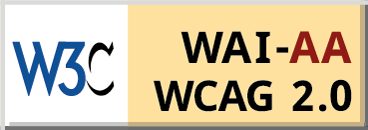Saudi-Pakistan Mutual Defence Agreements and Shifting Alignments in West Asia
- September 30, 2025 |
- IDSA Comments
The Iranian and Israeli missile strikes against Qatar have significantly eroded the deterrence reliability of the US security alliance for the Gulf States. The Saudi-Pakistan pact symbolises regional actors’ growing autonomy and assertiveness in reshaping the regional security environment. At the same time, it will accelerate the fragmentation of the US-backed security architecture and regional order in West Asia. Though the agreement’s deterrence objectives target both Israel and Iran, Tehran has welcomed the pact as a potential foundation for a broader regional security architecture led by Muslim nations.[1]
US Alliance System under Strain
For the Gulf States, the Barak Obama administration’s abandoning of long-time Egyptian President Hosni Mubarak during Arab uprisings, failure to enforce its own red lines in Syria by not taking action against the Bashar-al Assad government after the chemical weapons attack during the Syrian civil war in September 2013, and the signing of a nuclear agreement with Iran to pursue the US ‘pivot to Asia’, progressively eroded their trust in the US security commitments.
During President Donald Trump’s first term, the US ‘maximum pressure’ campaign against Iran led Iran and its allies to target the Gulf States’ oil exports and energy infrastructure. The lack of a US-led response was widely interpreted as a turning point for the US strategy in the Persian Gulf since the ‘Carter Doctrine’, proclaimed in January 1980, stated that the United States would use force to safeguard the Persian Gulf’s oil fields against outside invasion.[2]
As a result, the US allies in the Persian Gulf have been reinventing themselves as ‘Middle powers’ driven by geo-economic ambition. They have been diplomatically proactive and increasingly autonomous. This autonomy has been visible in their outreach to Tehran, hedging strategy following the Russia-Ukraine war, and the restoration of Saudi-Iran diplomatic ties in an agreement brokered by China. Riyadh’s initiative involving Beijing as the broker or guarantor of the agreement with Tehran reflected a policy of taking advantage of the US-China great power competition. It was not so much about replacing the security guarantees from the US, but rather about engaging China in an area where US policy has proven ineffective. As the US ‘maximum pressure’ campaign resulted in broader insecurity in the Gulf, Riyadh turned to dialogue as an alternative pathway to reduce the security competition with Iran, especially in Yemen and Iraq.
The second Trump presidency focuses on a much more transactional bilateral diplomacy. While Trump chose Saudi Arabia, the UAE, and Qatar for his first international visit, he focused on defence sale agreements and securing investment commitments worth nearly US$2 trillion to drive innovation in the US and advance bilateral technological collaboration in artificial intelligence and semiconductors. He also denounced the interventionist and value-based foreign policies of his predecessors.
Trump’s meeting with Ahmed al-Sharaa in Riyadh and the lifting of the US sanctions on Syria were seen as an indication of Washington’s divergence with Israel. However, the US decision to support Israel’s attack on Iran and the US bombing of Iran’s nuclear facilities, which exposed the US base in Qatar to retaliatory strikes by Iran, underscored Washington’s unwavering support for Israel, while risking the security of the Gulf States. Some Gulf analysts view Israel’s air strike on Hamas leadership in Qatar, a Western-aligned state hosting the most extensive US military base in the region, as marking a paradigm shift in Israeli doctrine from deterrence-based strategies to one based on unrestrained military action across multiple fronts and with little regard for sovereign borders.[3]
As the regional balance of power and threat perceptions increasingly centre on Israel, the Biden-era attempts at creating a networked military-political-economic architecture involving US allies and partners in West Asia are no longer tenable. Biden had prioritised attracting new partners, especially India, in the I2U2 format—involving India, Israel, the United Arab Emirates, and the United States—and the India-Middle East Europe Economic Corridor to advance an interconnected and resilient region that will not fall under the dominance of hostile actors.[4]
However, Saudi Arabia’s agreement with Pakistan suggests that as the Gulf States adapt to emerging threats through new deterrence strategies, they will lead in reshaping regional security dynamics. Crucially, as the Gulf States seek to correct their overreliance on Washington through new alliances or greater integration among the members of the Gulf Cooperation Council, they still hope for deeper security cooperation with the US.
The View from Tehran
At a time when Israel has emerged as an immediate threat to Iran, Tehran seemed to have redefined its security calculus vis-à-vis Pakistan and other neighbours. Following Iran’s missile strikes on terror targets in Pakistan in January 2024, which invited a similar response from Pakistan, Tehran has prioritised diplomacy to de-securitise its border and explore joint mechanisms to improve coordination in the fight against terrorism and foster deeper economic ties.[5] In May 2025, following India-Pakistan tensions triggered by Pakistan-sponsored terror attacks in Pahalgam, Pakistani Prime Minister Shehbaz Sharif visited Iran.[6] Sharif appreciated Iranian Foreign Minister Abbas Araghchi’s diplomatic initiative to diffuse tensions between India and Pakistan.
Pakistan’s categorical condemnation of Israeli attacks on Iran, including at the UN Security Council, where Pakistan was present as a non-permanent member and rotating president, was received well in Tehran. They have a similar political stance against Israel’s war in Gaza. Further, Israel’s rise as the pre-eminent military power in the region and a close India-Israel partnership may have created greater correspondence between Tehran and Islamabad’s threat perceptions of Israel. Notably, Israel condemned the terrorist attack in Pahalgam and conveyed full support for India’s fight against terrorism.[7]
Iran’s post-war security calculus prioritises regional diplomacy. In August, Iranian President Masoud Pezeshkian made a two-day visit to Pakistan. During a briefing before his departure, he noted that boosting border trade with Pakistan via land, air, and sea was among the key priorities for this trip.[8] He said that Iran can connect to the Silk Road through Pakistan, which links China and Pakistan, and the route can then extend through Iran to Europe.
Pezeshkian, in his meeting with the Saudi Crown Prince Mohammed bin Salman on the sidelines of the emergency summit of Arab and Muslim leaders in Qatar on 15 September, stated that “if Islamic countries are united, the Zionist regime will not dare to attack any Muslim country”.[9] He also envisaged a leading role for Riyadh in achieving such cohesion. A day later, Iran’s Secretary of the Supreme National Security Council, Ali Larijani, visited Riyadh, where he met with Crown Prince and Defence Minister Khalid bin Salman. Larijani told Iranian media that various issues were discussed, including economic, defence, and regional cooperation.[10]
Iran’s longstanding position has been to support dialogue among regional countries as a step towards cooperative and region-led security arrangements, while opposing the presence of extra-regional actors, especially the US. It is therefore unsurprising that Pezeshkian, in his address at the UN General Assembly, welcomed the defence pact between Saudi Arabia and Pakistan as a potential foundation for a broader regional security architecture led by Muslim nations.
West Asia is experiencing prolonged turbulence due to the ongoing system-level transition and an unstable regional power balance. As regional actors rather than external powers take the lead in reshaping the regional security dynamics and alignments, India will have to maintain the momentum of its Look West strategy and strengthen its existing partnerships.
Views expressed are of the author and do not necessarily reflect the views of the Manohar Parrikar IDSA or of the Government of India.
[1] Soheila Zarfam, “Pezeshkian says US and Israel ‘Betrayed’ Trust and Diplomacy”, Tehran Times, 24 September 2025.
[2] Hal Brands, Steven A. Cook, And Kenneth M. Pollack, “RIP the Carter Doctrine, 1980-2019”, Foreign Policy, 13 December 2019.
[3] Shaimaa al-Youssef, “How Israel’s New Military Doctrine Has Set The Middle East On Fire”, The New Arab, 11 September 2025.
[4] Deepika Saraswat, “I2U2 – Change and Continuity in India’s West Asia Policy”, Middle East Institute NUS, 19 September 2023.
[5] “Why President Pezeshkian’s Pakistan Visit Matters”, Tehran Times, 5 August 2025.
[6] “Iran-Pakistan Border Must Be Free of Insecurity, Terrorism”, Mehrnews, 26 May 2025.
[7] “India, Israel Vow to Deepen Defence Ties; Condemn Terrorism, Review Strategic Partnership”, Akashvani, 24 July 2025.
[8] “Pezeshkian: Iran Aims To Expand Trade With Pakistan To $10 Billion”, The Islamic Republic News Agency, 2 August 2025.
[9] “President Pezeshkian: Saudi Arabia Bears ‘Heavy Responsibility’ for Muslim Unity against Israel”, PressTV, 16 September 2025.
[10] “Defense Ties with Saudi Arabia Set to Strengthen: Iran Security Chief”, Tehran Times, 17 September 2025.




